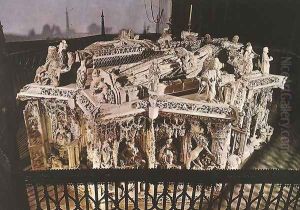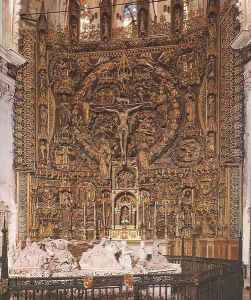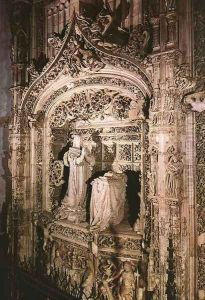Gil de Siloe Paintings
Gil de Siloé was a Spanish sculptor of Flemish origin who was active during the late 15th century in the Crown of Castile, notably in Burgos, which during his time was a major center of art and culture. His exact place and date of birth are not known, but based on the stylistic elements present in his work and the cultural influences, he is believed to have been born in the 1440s. Gil de Siloé is recognized as one of the most important and innovative sculptors of the Spanish Gothic and early Renaissance period.
Gil de Siloé's style is characterized by a blend of late Gothic and Mudéjar elements, with a high level of detail and realism in his figures, combined with intricate ornamentation. He is known to have introduced and popularized the Isabelline style, which corresponds with the reign of Queen Isabella I of Castile and is characterized by its elaborate decorative forms and incorporation of Moorish influences.
One of Gil de Siloé's most significant works is the altarpiece for the Cartuja de Miraflores, located near Burgos, which he was commissioned to complete in 1496 by Queen Isabella. This masterpiece showcases the artist's skill in carving and his ability to create complex iconographic programs. It is a prime example of his elaborate style, with its detailed figures and narrative scenes from the life of Christ. Another notable work is the tomb of King John II of Castile and his wife, Isabella of Portugal, located in the same charterhouse.
Gil de Siloé also worked on the altarpiece for the Convent of Saint Paul in Burgos and created the tomb of Infante Alfonso, which further cemented his reputation as a master sculptor. He had a significant influence on the development of sculpture in Spain and his workshop contributed to the training of several important Spanish artists, including his son, Diego de Siloé, who would go on to become a prominent architect and sculptor in the Renaissance style.
The exact date of Gil de Siloé's death is not known, but it is believed that he died around 1501. His work left a lasting impact on the Spanish artistic landscape and he is remembered as a key figure in the transition from Gothic to Renaissance art in Spain.


